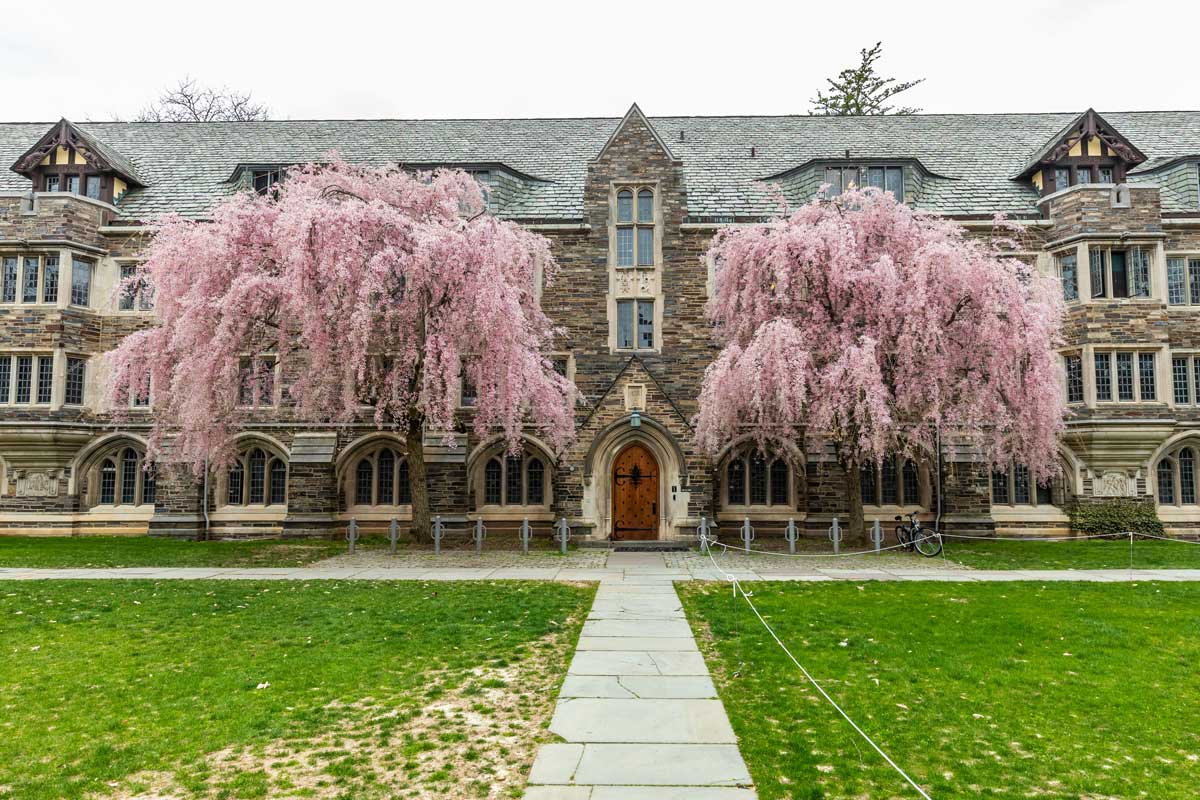Photo by PhotoSpirit – stock.adobe.com
The campaign continues to convince Ivy League and other elite universities to eliminate legacy admissions and admit more lower income students after the Supreme Court decision to disallow affirmative action. After that decision, I wrote about several articles and papers that reported that admissions at the Ivy Plus institutions favor the rich. I noted that no one considers that highly selective and high tuition universities have a business model that is different than other colleges.
To illustrate the issues, I used data from the Department of Education’s College Navigator website. I built data tables for each of the 12 Ivy Plus institutions as well as mean and median values for the group. Some of the key datapoints are:
- The mean cost of attendance (COA) is $83,601.
- The mean percentage of undergraduates receiving Pell grants is 16%.
- The mean percentage of undergraduates receiving Federal loans is 10%.
- The mean average grant aid per undergraduate is $52,900.
- The mean average Pell grant received is $5,128.
- The mean average Federal loan received is $6,165.
- The mean average net price for students from families whose income ranges
- From $0-$30,000 is $3,118
- From $30,001-$48,000 is $2,518
- From $48,001-$75,000 is $6,489
- The mean percentage of first year students with no financial aid is 38%.
These data points illustrate the high cost of attendance at Ivy Plus institutions, a high average scholarship grant for undergraduates who attend, the small contribution that the average Pell grant covers in costs, the institutional initiatives to keep student loan balances low, and the very low average net price for students from the three lowest income quintiles. Also noted was that 36,686 students (38%) were full-pay.
A recent blog post from the HEA Group attracted my attention. The title of the article is Increasing Economic Diversity at Ivy League Schools Shouldn’t Be That Hard. Given my previous analysis of the Ivy Plus business model, I thought I’d see if there were any other factors I failed to consider.
The article cites two statistics in its opening paragraphs. These are:
- Those from the bottom quintile of family income are 77 times less likely than their wealthy peers to receive an admittance letter from an Ivy or Ivy like school.
- Even if your SAT scores are the same, you’re half as likely to be admitted.
The premise of the paper is that a modest increase of low- and moderate-income students (Pell grant recipients) of only 5% would make a big difference and keep the percentage of Pell recipients below the national average of approximately 40%.
Numbers can be deceiving. The 5% increase is not modest. HEA proposes a 5% increase of overall students or a 31% increase in Pell students. HEA Group calculates the increase in Pell students as 682 for the eight Ivy League universities based on their first-year enrollments. Assuming an increase like this continues for four years until the Pell percentage is the same for all undergraduates, the total impact would be four times 682 for a total of 2,728 additional lower income students.
The paper concludes with the statement “if the Ivy Leagues believe in the American Dream, it’s about time they share their prosperity with other deserving students.” I’m in favor of increasing opportunities for Pell students. In fact, I attended Duke University as a Pell grant and scholarship recipient.
However, the suggestion ignores the expense impact of such a major change. Pell grant recipients are likely in the two lowest income quintiles. The mean Ivy Plus COA is $83,601. The mean average net prices for students in the two lowest income quintiles are $3,118 and $2,518. After subtracting average Pell grants received, the universities are providing mean net average grants of $75,355 and $75,955 for students from the two lowest income quintiles.
College Navigator does not provide the distribution of undergraduate students between income quintiles. For purposes of my analysis, I will assume that the distribution is 50/50 between the lowest and second lowest quintiles which allows me to average the $75,355 and $75,955 to compute an average grant of $75,655. If you multiply the average grant times the 2,728 incremental students, the annual incremental cost is $206,386,840. Yes, that’s the annual incremental cost.
Where does the money come from to cover the incremental costs? Certainly not from the government’s Pell grant program. The mean average Pell grant at the Ivy Plus institutions is $5,128. I’ve netted that grant out in my calculation.
If the incremental cost is to be covered by the Ivy’s League universities’ huge endowments, it would require an offset of unrestricted funds or additional endowment funds of $4.2 billion (assuming a 5% annual draw).
If the cost is to be covered by the parents of full pay students, we have a math problem. The percentage of full pay students at the Ivy Plus schools is 38%. If overall enrollments remain the same, that percentage decreases to 33%. Decreasing the percentage of full pay students would require a substantial increase in the total cost of attendance and might risk decreasing the percentage of full pay students in the process. I don’t have enough data to attempt to calculate the potential increase or impact.
The facts are that our current financial aid programs have not kept pace with the inflated costs of college attendance. When I followed up my original analysis of the Ivy Plus institutions with analyses of other elite private institutions, HBCUs, major public universities, and community colleges, my findings indicated that the lowest average net prices for the two lowest income quintiles were at the Ivy Plus universities.
The business models (tuition rates, endowment draws, discount percentages, state grants, etc.) of all the other college segments are not designed to cover 100% of the gap in COA. The mean average net prices for the two lowest income quintiles at community colleges are $7,557 and $8,208. Those prices are more than double the average net prices at the Ivy Plus universities and the community college average COA is $11,979 for in-state students and $16,903 for out-of-state students.
Let us go back to the two original statistics presented at the beginning of the HEA Group article. If you’re from the lowest income quintiles, you are 77 times less likely to be admitted to an Ivy League institution. If the pool of low-income students is adjusted by SAT scores, you are half as likely to be admitted.
The first statistic includes all low income students without sifting through their academic qualifications. The second statistic adjusts for that and significantly reduces the pool as well as increases the odds of admission. If the second statistic was adjusted for other factors that the Ivy League institutions look for, the odds might improve.
There was no discussion or review of the statistics in the HEA Group article. My interpretation of these stats is that we would be better off ensuring that all of our lowest income students receive a quality K-12 education that prepares them to attend college than pressuring the Ivies to admit more. With a better K-12 education, they will have more higher education options should that be their long-term education goal.
The high-cost Ivy League experience is a business model developed and honed by the highly selective universities. Their marketing of exclusiveness through selectivity enables them to charge the highest tuition and fees to wealthy families. Asking them to voluntarily reduce their percentage of full-pay students will be difficult particularly because the lowest income families have such high financial needs. Meeting these low income students’ needs requires a different business model.
When I was president of American Public University System, we decided to cap our tuition for active duty service members at the Department of Defense’s tuition reimbursement rate of $250/semester hour. We also eliminated 90% of our fees and covered the students’ cost of textbooks through a book grant. Since we were 100% online, we didn’t have a cost for room and board. Our average net price excluding room and board was $0 for active duty servicemembers.
APUS’s average net price of $0 resonated very well with lower income enlisted personnel. Over time, as many colleges and universities increased their tuition, we did not because the Department of Defense (DoD) did not increase its tuition reimbursement rate. In fact, DoD has not increased its reimbursement rate since October 2001.
We worked hard at APUS to find efficiencies in operating an online university to continue to offer low tuition to active duty service members. I am proud of the fact that when I retired in August 2020 slightly more than 70% of APUS’ undergraduate degree recipients had no federal loan debts.
I suspect that college tuition costs would be much lower today if increased federal student loan caps and loan products like the Parent Plus and Graduate Plus programs had not increased the availability of funds to students to cover tuition and fee increases. It’s too bad that Congress emphasized increasing loan availability versus increasing the size of Pell grants.
It’s time we take a fresh look at federal and state college financial aid programs, the costs of attendance of our colleges and universities and what expenses are necessary for educating students. The proposed loan cancellation policies are a Band-aid solution for a gaping wound. Finding solutions will require transparency and a disciplined approach to examine all the costs at all colleges, not just a highly selective group of eight or twelve.











